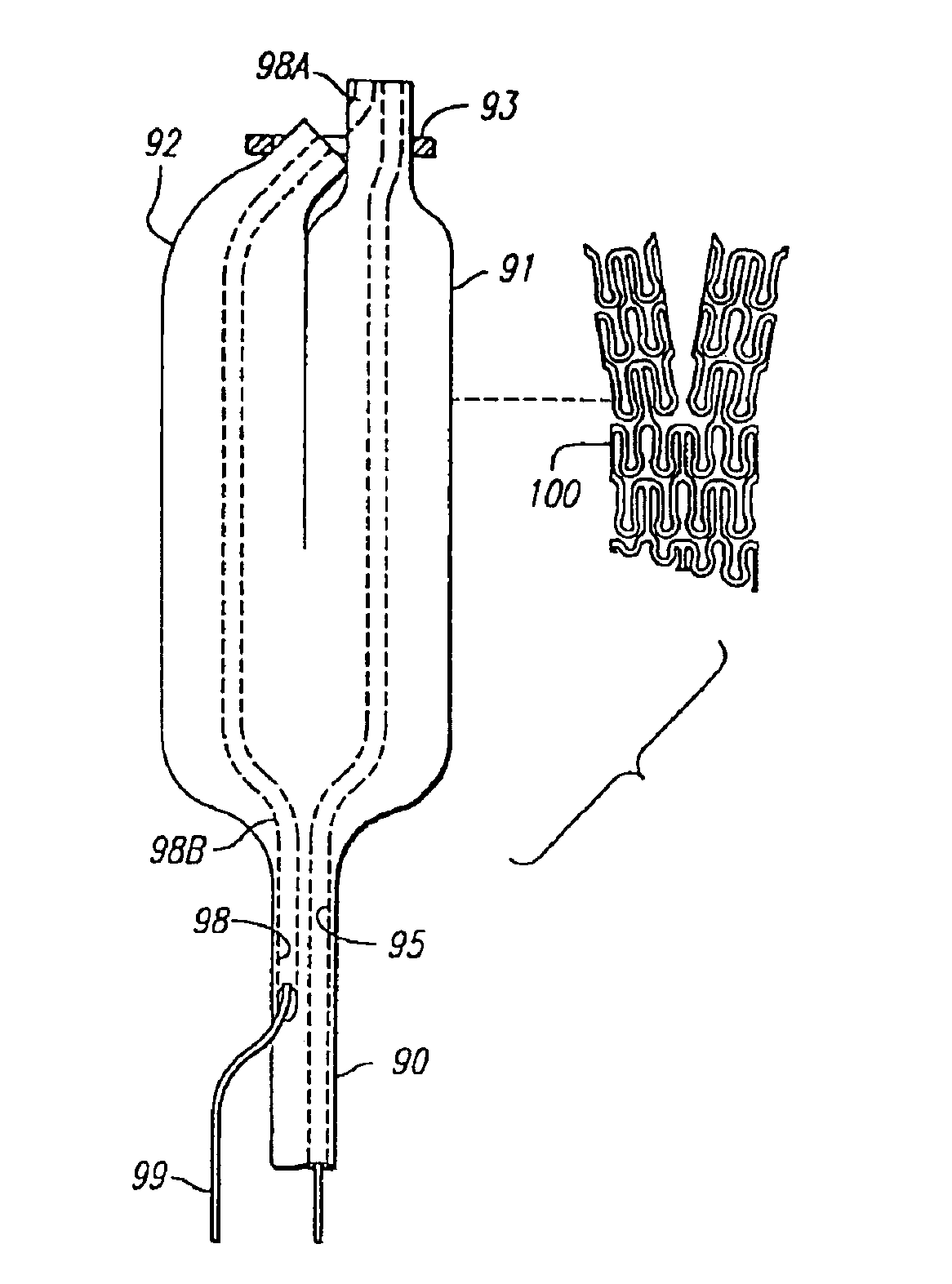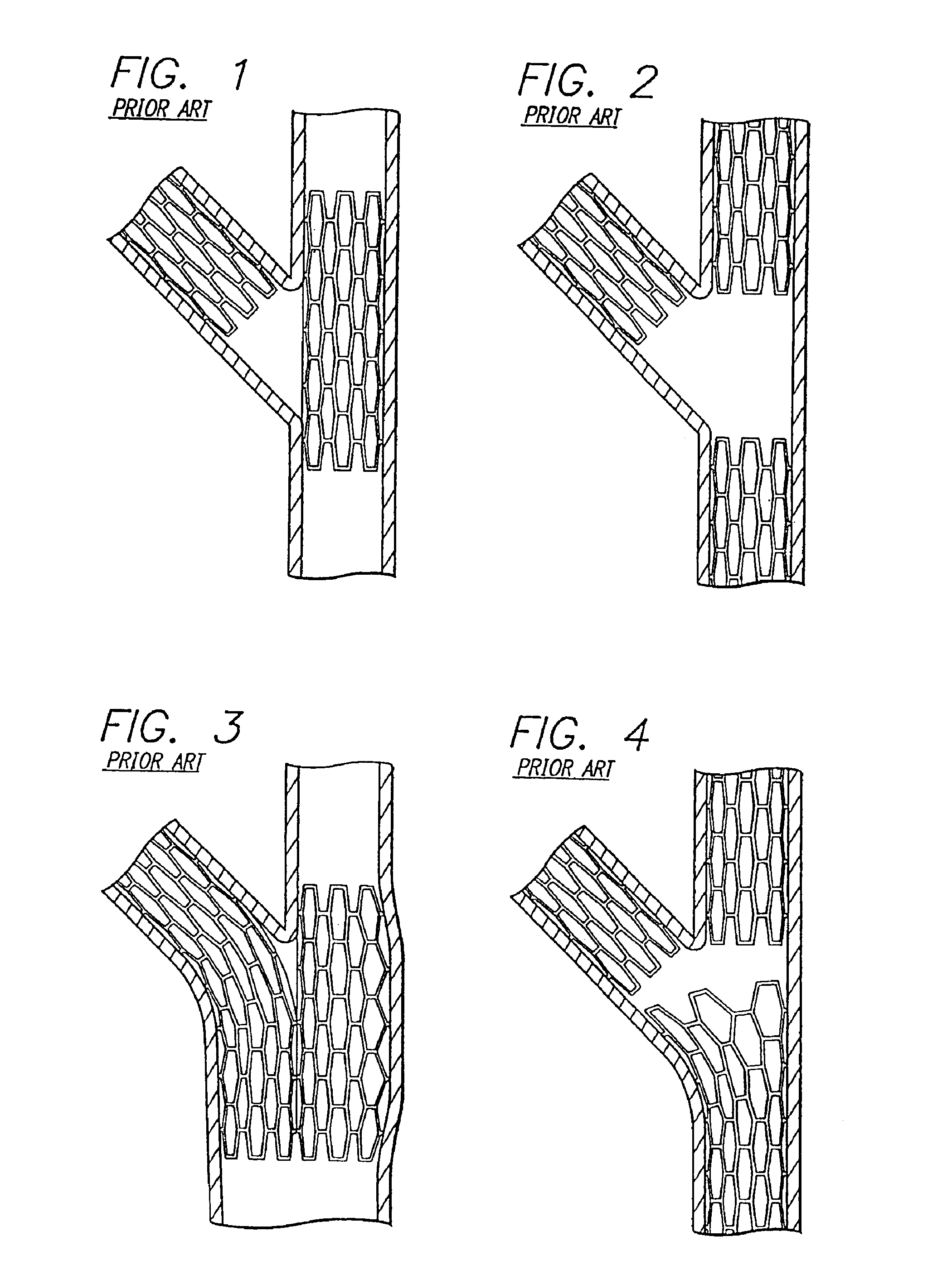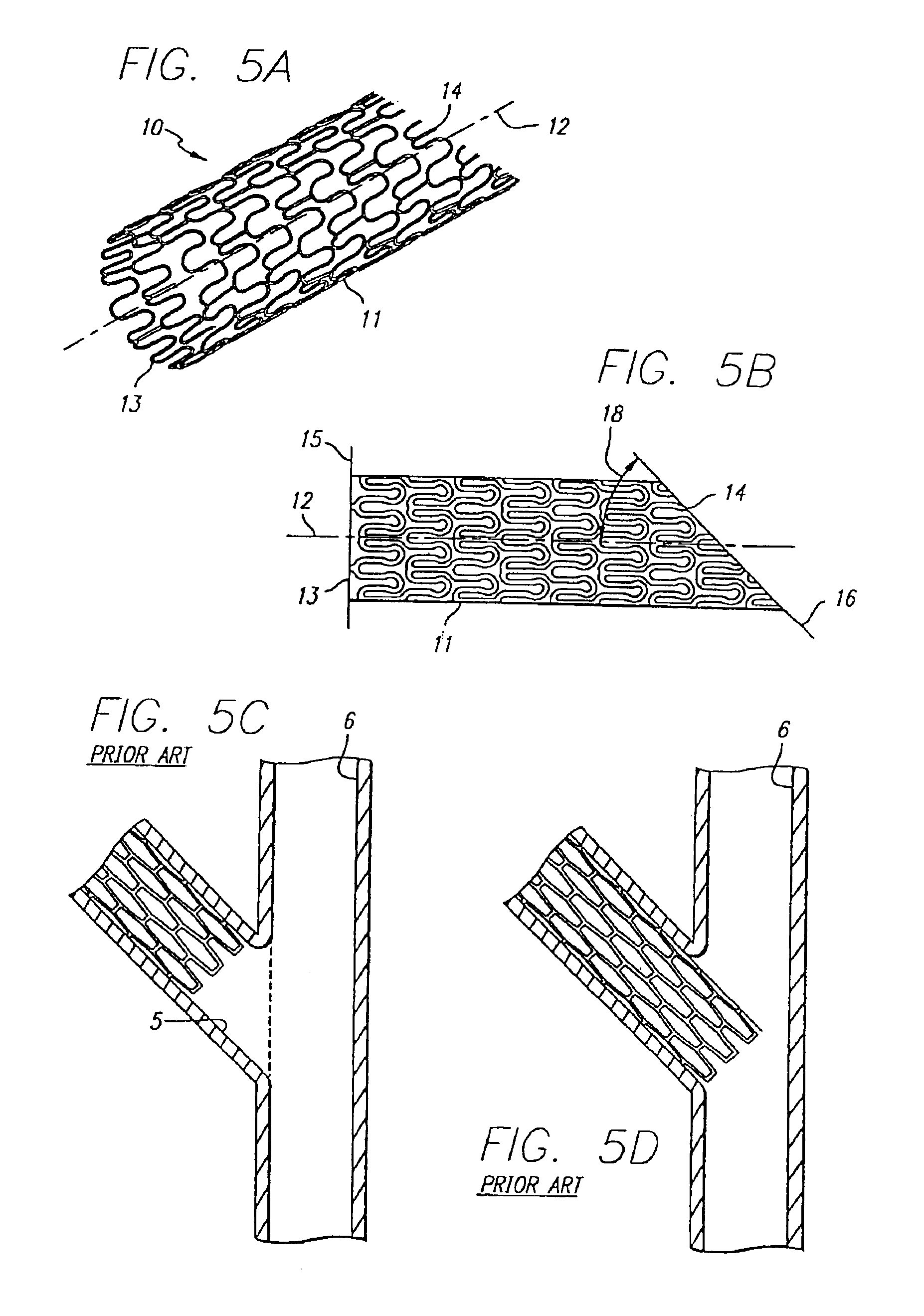Stent and catheter assembly and method for treating bifurcations
a technology which is applied in the field of stent and catheter assembly and the field of treating bifurcations, can solve the problems of stent failure to completely repair the bifurcated vessel, difficulty in repairing the bifurcated vessel, and blood flow in other parts of the bifurcation may be compromised
- Summary
- Abstract
- Description
- Claims
- Application Information
AI Technical Summary
Benefits of technology
Problems solved by technology
Method used
Image
Examples
Embodiment Construction
[0086]The present invention includes an assembly and method for treating bifurcations in, for example, the coronary arteries, veins, arteries, and other vessels in the body. Prior art attempts at implanting intravascular stents in a bifurcation have proved less than satisfactory. For example, FIGS. 1-4 depict prior art devices which include multiple stents being implanted in both the main vessel and a side-branch vessel. In FIG. 1, a prior art “T” stent is implanted such that a first stent is implanted in the side branch near the ostium of the bifurcation, and a second stent is implanted in the main vessel, across the side-branch ostium. With this approach, portions of the side-branch vessel are left uncovered, and blood flow to the side-branch vessel must necessarily pass through the main-vessel stent, causing possible obstructions or thrombosis.
[0087]Referring to FIG. 2, three prior art stents are required to stent the bifurcation. In FIG. 3, the prior art method includes implanti...
PUM
 Login to View More
Login to View More Abstract
Description
Claims
Application Information
 Login to View More
Login to View More - R&D
- Intellectual Property
- Life Sciences
- Materials
- Tech Scout
- Unparalleled Data Quality
- Higher Quality Content
- 60% Fewer Hallucinations
Browse by: Latest US Patents, China's latest patents, Technical Efficacy Thesaurus, Application Domain, Technology Topic, Popular Technical Reports.
© 2025 PatSnap. All rights reserved.Legal|Privacy policy|Modern Slavery Act Transparency Statement|Sitemap|About US| Contact US: help@patsnap.com



